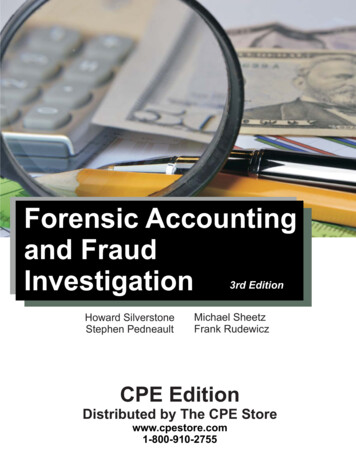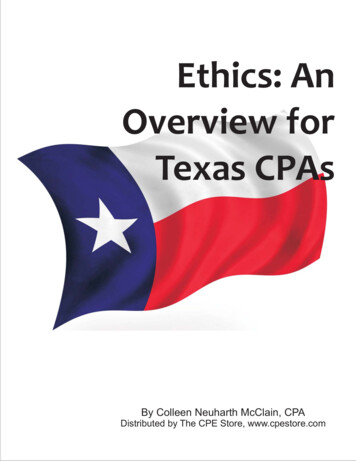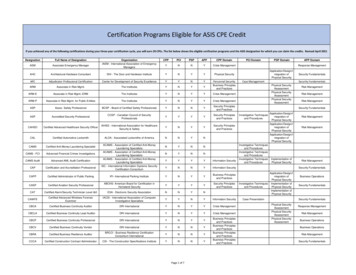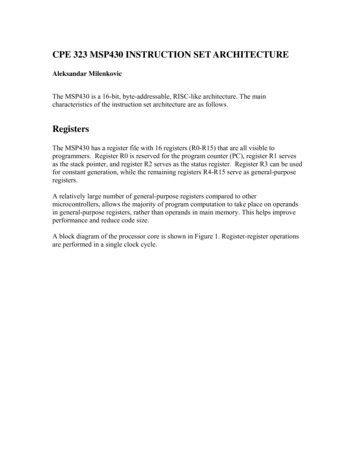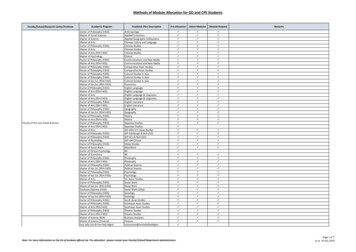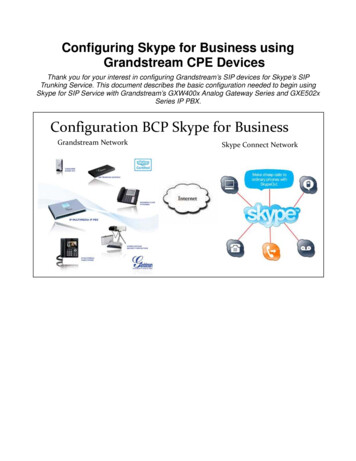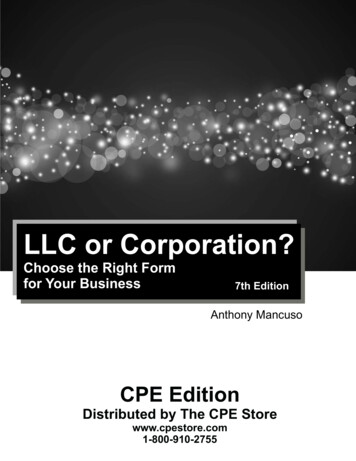
Transcription
LLC or Corporation?Choose the Right Formfor Your Business7th EditionAnthony MancusoCPE EditionDistributed by The CPE Storewww.cpestore.com1-800-910-2755
LLC or Corporation?Choose the Right Form for Your Business7th EditionAnthony Mancuso
Copyright 2016 by Nolo and The CPE Store, Inc. All rights reserved.This book includes the full text of “LLC or Corporation: Choose the Right Form for Your Business,” written byAttorney Anthony Mancuso, and reprinted with permission from Nolo, which owns the copyright. The Course Information, Learning Objectives, Review Questions and Review Answers are written by The CPE Store, Inc., whichowns the copyrights, thereto.No part of this publication may be reproduced, stored in a retrieval system, or transmitted in any form or by anymeans, electronic, mechanical, photocopying, recording, scanning, or otherwise, except as permitted under Section107 or 108 of the 1976 United States Copyright Act, without the prior written permission of the Publisher.Limit of Liability/Disclaimer of Warranty: While the publisher and author have used their best efforts in preparingthis book, they make no representations or warranties with respect to the accuracy or completeness of the contents ofthis book and specifically disclaim any implied warranties of merchantability or fitness for a particular purpose. Nowarranty may be created or extended by sales representatives or written sales materials. The advice and strategiescontained herein may not be suitable for your situation. You should consult with a professional where appropriate.Neither the publisher nor author shall be liable for any loss of profit or any other commercial damages, including butnot limited to special, incidental, consequential, or other damages.Printed in the United States of America
Course InformationCourse Title: LLC or CorporationLearning Objectives: Identify a situation in which a husband and wife must file a partnership return for their unincorporated small business Determine which form a sole proprietor uses to determine his or her liability for self-employmenttaxes Recognize which business structure is the riskiest to operate Spot the term which refers to an LLC that is managed by the owners Calculate the income tax liability for a C corporation that has taxable income of 60,000 Identify the party most likely to be the general partner in a large limited partnership Select, from a list, an accurate statement regarding S corporation profits and losses Identify a type of business likely to benefit from organizing as a Series LLC Pinpoint the party or person that would potentially have personal liability for entity debt Identify something that should be a top priority for all businesses Recognize the non-corporate structure which has fallen out of favor with entrepreneurs Identify a type of business that is not required to have an EIN when filing its income tax return Determine who or what resolves a situation in which partners cannot agree on a business issue,and no written partnership exists Recognize the determining factor in deciding when it is time to form an LLC Pinpoint who is entitled to bring in an outsider to run a business Spot a basic step in forming a corporation in all states Identify the quickest turnaround time when filing online for corporate articles of incorporation Ascertain which amount the owners report and pay income taxes on if a pass-through entity doesnot distribute all of its taxable earnings Determine the result of a decrease in the tax basis of an LLC co-owner Identify the amount of earnings a C corporation may retain Recognize the business type unable to change its tax classification by filing Form 8832 Select the tax rate typically used to calculate a partner’s payment under a “distribution clause” Spot the item which is added back when calculating a corporation’s earnings and profits Identify the article which allows an owner to sell his or her shares back to a corporation and havethe transaction treated as an “exchange” Determine the best business structure for two co-owners who want personal liability protection,pass-through tax treatment, and desire to add passive investors Recognize the best alternative for a growing business that wants to raise additional capital and entice employees away from competitors Determine which form of business should be considered in order to alleviate personal liabilityconcerns when a sole proprietor adds a second owner to the business Recognize the type of interest which should be issued to an incoming partner who will providefuture services Identify the Revenue Ruling which provides information regarding the tax results of converting aone-owner business to a two-owner business Recognize a situation in which an EIN would be required Identify the form or schedule number that corresponds with the U.S. Return of Partnership Income
Course Information Determine which IRC section applies to the tax-free treatment of incorporating a sole proprietorshipSelect the term which refers to property received by a shareholder other than shares of stock during incorporationDetermine what will occur if Partner A transfers his or her entire interest to new Partner C, ifPartner A owns a 60% interest and Partner B owns a 40% interestAscertain what is gained by limited partners gain if their limited partnership is converted to anLLCIdentify a situation in which personal liability for an LLC member could be createdPinpoint a typical consequence of converting a partnership to an LLCRecognize a potential tax trap for general partners after conversion to an LLCSelect the most common reason why partnerships incorporateDetermine what is available in some states that streamlines the conversion of a partnership to acorporationSpot the primary benefit of electing Subchapter S statusRecognize why the corporate structure is often more suitable for larger businesses than an LLCIdentify the category of partnership-to-corporation conversions that matches the steps provided inRevenue Ruling 2004-59Determine the federal tax consequence if the owner of a one-member LLC dissolves the LLC andcontinues the business as a sole proprietorRecognize the reason LLC-to-partnership conversions are uncommonIdentify an entity that can be a Subchapter S corporation shareholderDetermine how long an S corporation must wait to reelect S corporation status after revoking itselectionRecognize who is typically subject to taxes when a corporation dissolvesDiscern why buyers typically desire a “stepped-up” basis in the purchased assets when acquiringa corporationSpot the cash-to-stock ratio in which the IRS deems a buying corporation can pay to the shareholders of the selling corporation in a Type A tax-free reorganizationIdentify the term for income that is earned and taxable within a stateRecognize the act which could force you to defend a lawsuit in another state if your companydoesn’t have to qualify to do business in that stateRecognize an example of an intrastate activity in another stateDetermine a result of a state’s closed-door statutesAscertain how an LLC typically avoids double taxation of profits earned in another stateSelect the term which refers to a state’s ability to bind you by its decisionPinpoint something that is included in a contract to set out where a case can be filedIdentify the term for the state tax which is owed on property purchased out-of-state and usedwithin the stateSubject Area: TaxationPrerequisites: NoneProgram Level: Overview
Course InformationProgram Content: This course covers all aspects of the choice of entity decision, including personalliability concerns, money issues, concerns of doing business out-of-state, converting a partnership or asole proprietorship to another entity, converting an LLC to another entity, converting, dissolving or selling a corporation, and much more. The text also provides conversion and formation scenarios that providea real-world look at all the options available. It is better to get all the facts and make an informed decisionup-front than expend an excess of time and effort cleaning up after a mistaken choice later.Advance Preparation: NoneRecommended CPE Credit: 12 hours
About the AuthorAnthony Mancuso is a corporations and limited liability company expert. A graduate ofHastings College of the Law in San Francisco, Tony is an active member of the California State Bar, writes books and software in the fields of corporate and LLC law, and hasstudied advanced business taxation at Golden Gate University in San Francisco. He alsohas been a technical writer for technology companies. Tony currently works for Googlein Mountain View, California.He is the author of many Nolo books on forming and operating corporations, profitand nonprofit, and limited liability companies. Among his current books are IncorporateYour Business: A Legal Guide to Forming a Corporation in Your State, The CorporateRecords Handbook: Meetings, Minutes & Resolutions, How to Form a Nonprofit Corporation, Form Your Own Limited Liability Company, and Your Limited Liability Company: An Operating Manual. His books and software have shown over a quarter of a millionbusinesses and organizations how to form and operate a corporation or LLC.Tony has lectured at Boalt School of Law on the University of California Berkeleycampus (Using the Law in Nontraditional Settings) and at Stanford Law School (How toForm a Nonprofit Corporation). He taught Saturday Morning Law School business formation and operation courses for several years at Nolo Press offices in Berkeley. He hasalso scripted and narrated several audiotapes and podcasts covering LLCs and corporateformations and other legal areas for Nolo, as well as The Company Corporation. He hasgiven many recorded and live radio and TV presentations and interviews over the yearscovering business, securities, and tax law is-sues. His law and tax articles and interviewshave appeared in the Wall Street Journal and on TheStreet.com.Tony is a licensed helicopter pilot and has performed for years as a guitarist. To access Tony’s LLC and corporation blogs and podcasts, plus links to his books and software, go to the Nolo website (www.nolo.com).
Table of ContentsChapter 1 – Business Entity Basics . 1Learning Objectives . 1Introduction. 1Why Your Choice of Entity Matters. 1Sole Proprietorships. 2Number of Owners. 2Liability for Business Debts . 3Income Taxation . 3General Partnerships . 3Number of Partners . 4Personal Liability for Business Debts . 4General Partnership Income Taxation . 5Limited Liability Companies (LLCs) . 5Number of Owners. 6Limited Liability . 6Pass-Through Taxation. 6Management. 6Formation Requirements. 7Corporations . 7Number of Shareholders (Owners) and Directors . 7Limited Liability for Shareholders . 8C Corporation Income Taxation. 8Corporate Management . 10Corporate Capital and Stock Structure . 10Employee Fringe Benefits . 11 And the Runners-Up: Limited Partnerships, S Corporations, and RLLPs. 11Limited Partnerships . 11S Corporations. 12Registered Limited Liability Partnerships (RLLPs) . 15Review Questions . 19Review Answers . 21Chapter 2 – Personal Liability Concerns . 25Learning Objectives . 25Introduction. 25How Your Choice of Business Entity Affects Personal Liability . 25Sole Proprietorships and General Partnerships . 25Limited Liability Entities. 25Exceptions to the Rule of Limited Personal Liability . 26Limited Partnerships . 28Using Insurance to Limit Liability . 28Review Questions . 31Review Answers . 32Chapter 3 – Forming and Running Your Business . 33Learning Objectives . 33Introduction. 33Forming and Running a Sole Proprietorship . 33Forming a Sole Proprietorship. 33Running a Sole Proprietorship . 33Forming and Running a Partnership . 35Forming a Partnership . 35Running a Partnership . 35Forming and Running a Limited Liability Company . 36
Table of ContentsForming an LLC . 36Running an LLC . 37Forming and Running a Corporation . 39Forming a Corporation . 39Running a Corporation . 39Resources for Forming an LLC or Corporation . 41State Websites . 41Legal and Business Self-Help Books. 41Review Questions . 43Review Answers . 44Chapter 4 – Money Issues: Taxes, Profits, Losses, and Investments . 47Learning Objectives . 47Introduction. 47Taxes . 47Pass-Through Tax Treatment . 48How Do You Keep Track of Your Tax Basis in a Co-Owned LLC? . 49Corporate Tax Treatment . 50Changing Your Tax Classification .
Anthony Mancuso is a corporations and limited liability company expert. A graduate of Hastings College of the Law in San Francisco, Tony is an active member of the Califor-nia State Bar, writes books and software in the fields of corporate and LLC law, and has studied advanced business tax
